Mon 29 Aug 2011
I told Branden a couple of weeks ago that I must absolutely not – for any reason – buy another raw fleece at Wisconsin Sheep and Wool this fall. I still have a fleece washed and waiting to be combed, and I just haven’t been getting around to it. I love the fiber, and I have a serious weakness for fleeces, but I really don’t need another.
Well. We all know what happens next, right?
While I was back in Boston, my college roommate and I went to visit a friend who works as the caretaker for a historic farm museum in Rhode Island, called Coggeshall Farm. It’s a fully functional farm on 4 acres in seaside New England.
We helped pick cucumbers and gooseneck squash from the farm garden.
And were followed around by a friendly rooster.
Shelley showed us around the old farmhouse.
It’s chock full of interesting tools, like this cheese press.
And a functional loom.
As well as a beautiful great wheel.
We also got to meet the farm donkey,
(and horse and steer), as well as a curious trio of turkeys.
There is also a flock of sheep, but they are allowed to roam at will and were off enjoying the summer day, nowhere to be seen. But in the basement, we found their fleeces.
The sheep are a rare breed called Gulf Coast. They came to the New World with the Spanish, and have been adapting to life in the warm Southeast ever since. According to the American Livestock Breed Conservancy, they are one of the four most critically endangered sheep breeds in the world, with only about 2000 sheep left (more interesting info about them here, from another small farm that raises them).
It just so happens that they also have beautiful wool.
The fiber is very fine, and it has a ton of crimp. The staple is about 4-5″ long, and the wool was in great shape. I don’t know the name of the shearer, but Shelley said that he comes in and hand shears, and he did an amazing job. I’ve had a hard time finding even a couple of second cuts.
The fleece could have been skirted more aggressively; I threw out about a half of a small grocery bag of fiber that I didn’t deem worth the effort to clean, but I decided to try some of the more doubtful parts (the small pile on the right in the picture) and was very impressed with how well they cleaned up.
Since the sheep are free to roam, there are a few burrs in the fiber here and there, but it’s generally extremely free of vegetable matter for an uncoated animal.
The majority of the fleece was also surprisingly clean (for a dirty sheep), and turned the most beautiful white when I washed it.
Unfortunately, I didn’t use hot enough water the first time around, so the locks didn’t fully open up and release their lanolin. So this weekend I used my hand cards and opened up the locks. (That’s is the “dirty” part of the fleece, below.)
Then I rewashed them in hotter water, and they came out beautifully.
The dirtier sections that I “reclaimed” are slightly stained in spots, but will be fine for dyeing.
I’m still working on the cleaner parts of the fleece; I’m doing all of the washing with 5 gallon buckets on the patio, so it’s taking a while to get through. (This is the cleaner fiber, before teasing open the locks.)
With a 7.5 lb fleece, I think I have my work cut out for me.
Since I know that some of you will ask, Shelley does have a few more fleece in the basement. There are a total of three from this year, and a few more from last years’ shearing. I looked at the three newer ones, and I’d say that they are all top quality. Her asking prices are really unreasonably low, so I’d get in touch if you’re interested. Her email is: Â s dot otis at coggeshallfarm dot org.
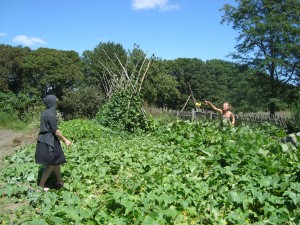
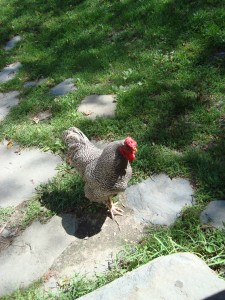

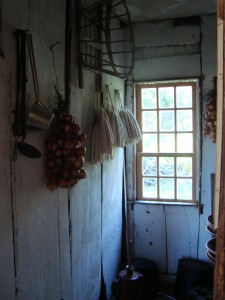
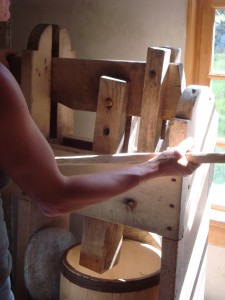
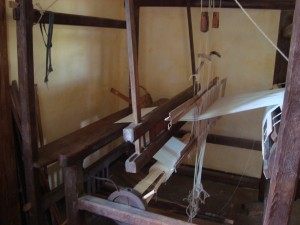
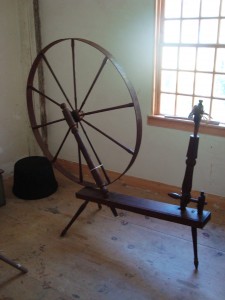
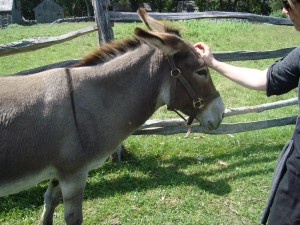
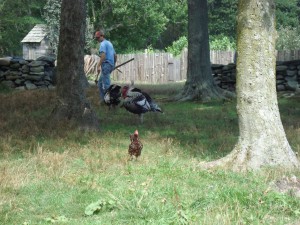
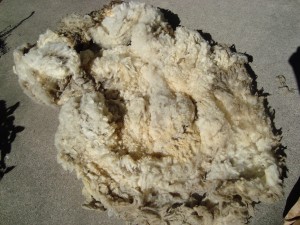
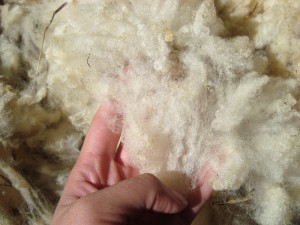
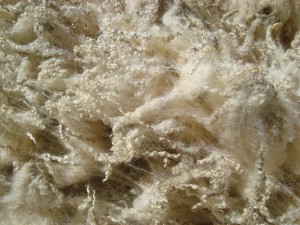
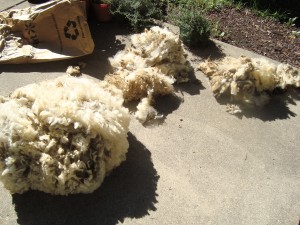
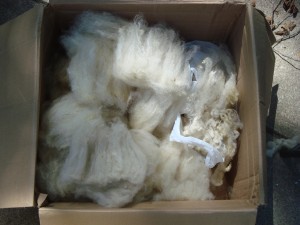
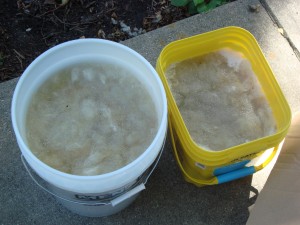
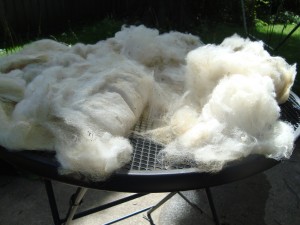
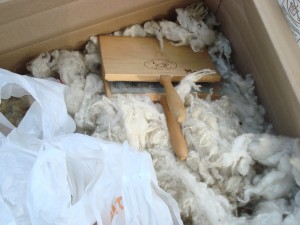
Yeah, I’ve learned that in general it’s best not to say I wouldn’t do something. Usually it just ends up that that very thing happens! It looks like you had a fun visit, though, and I just love seeing the way wool can clean up like that. You should have a lot of fibery fun with that fleece!
Oh. Oh, wow. Gosh I wish I could get one of those!! I know I wouldn’t get it cleaned before it rots, though, alas… I can’t WAIT to hear how it spins – it looks like it’s going to be a blast!
I was astounded by the bit of Gulf Coast I spun up in the rare breeds spinning I did this spring. I emailed Shelley before I even commented here. 🙂
Lovely, sent her an email, would love to get my first fleece! Sounds like an wonderful visit too!
I want! At least your post got me washing the gulf coast fiber that I had sitting, wsaiting patiently. 😉 Your looks much nicer, though ……
I love Gulf Coast Native fiber!!! I bought a bunch at the Destin spin-in in January and have plans for a sweater. A really hot sweater for our really hot winters! I’m nuts.